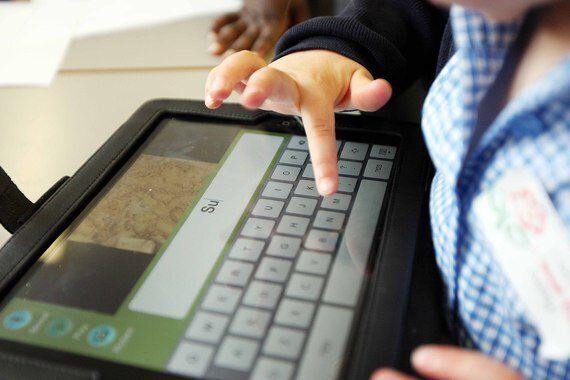E-books, ibooks, storyapps, LeapReader books... there are so many names to describe digital books that it's hard for parents and teachers to understand what to call them, let alone how to use them with their children. Moreover, tens of thousands of children's digital books are advertised as educational, even though researchers have repeatedly said that the vast majority are not. In addition, there is confusion over whether e-books count as part of screen time and whether their use should be restricted or encouraged in the classroom and at home. It seems there is plenty of confusion circulating about children's digital books, so here are some facts to set the record straight.
Born without a name...
First, let me assure you that there is no agreed definition and terminology for children's digital books. Digital books for children aged 2-8 years -- available on tablets and smartphones -- are often called story apps (or book apps). Those which are downloadable for eReaders (e.g., Kindle,Kobo), or for computers or laptops, and are typically used with older children, are often called e-books. This is not the norm, however, and publishers and digital producers often use the terms interchangeably. Children like to invent their own names, such as "gbooks" or "filmbooks", which, arguably, better reflect the fact that most popular digital books are hybrids of books, short films and digital games.
To read or not to read digital books -that is the question.
The research evidence for digital books is mixed- results in favour of print or digital books vary, depending on the platform the book appears on, the purpose and context of a specific reading activity as well as the specific features studied by the researchers.

Copyright The Open University
A body of research concerned with e-books on laptops and PCs shows that high quality e-books can support children's vocabulary, story comprehension and word reading. However, e-books and digital books on tablets with many hotspots and multimedia features which do not correspond to the narrative can diminish children's story comprehension and vocabulary.
Storyapps and digital books for iPads have been around since 2010, so the research in this area is only emerging. Initial findings highlight the importance of touch for engagement with the story (especially for children with complex educational needs). Researchers are also intrigued by increased personalisation options in story apps and there is emerging evidence that digital books with personalisation features support positive parent-child interaction when read together.
Given this variety, any prescriptive guidance on how to read a digital book would be ill-placed. Several organisations (for example the Erikson TEC Center) provide best practice video examples for how to use digital books at school, and the Joan Ganz Cooney Centre recently produced a free interactive guide for parents and caregivers with tips on how to use apps, including digital books. The emphasis in all these resources is placed on child's enjoyment and engagement rather than a specific reading technique.
Which digital book to read?
A third, perhaps less known fact is that there is no agreed set of benchmarks for evaluating children's digital books. Organisations, like Common Sense Media, for example, typically include digital books under educational apps. However, different organisations follow different rules, which makes it difficult for parents and teachers to know which out of the thousands of titles to choose.
The saturated market is a problem not only for teachers and caregivers, but also for the producers of digital books: for small publishers, getting to users is often difficult, even if they are listed as outstanding by the organisations. Digital book awards, like the UKLA Digital Book Award, judged by teachers and tested in schools, can help publishers get exposure in schools and reach new audiences. For the home market, social sites such as Moms with Apps are a great way to get on the radar of parents.
Increasingly, there are storyapps co-produced with academics (e.g., iRead With was created in conjunction with the Child Phonology Lab at the McGill University). With a growing emphasis on collaboration with the industry in academia, collaboratively produced digital books are likely to surge in the next years, which is good news for those who are concerned about their educational value.
DIY...
If you decide to evaluate a digital book yourself, then bear in mind that there is a huge variety among as well as within each digital book. Different conventions are followed by different titles , for example turn the page or the home icon look different across books and there are also different positions for hotspots, with some books including interactive areas in a different place on each page of the same digital book.
The other fact to bear in mind is that most digital books aim to serve two purposes: to entertain and to educate and your choice of a book will therefore depend on the objective of the activity, the child's needs and your own attitude to reading and digital media. If you cannot find a digital book that what you are searching for, remember that the beauty of digital is the effective customisation and personalisation of content- with Me Books, you can add your own narration and sound effects, with Our Story, you can create your own story all together.
In conclusion, let me remind you that digital books are part of the Digital Wild West, which means that they are still enjoying the untamed nature of digital production. So, whether you are a teacher or parent, leave your hat on.